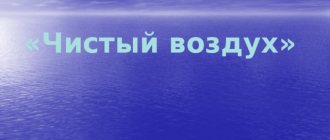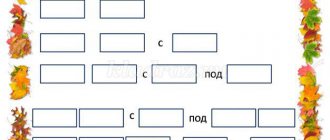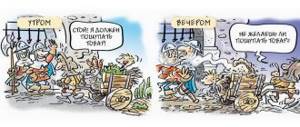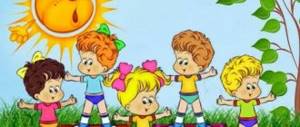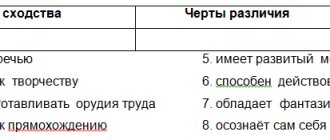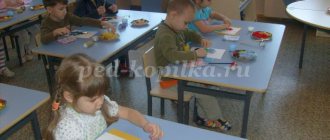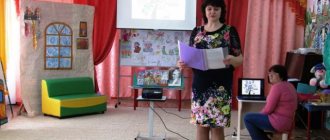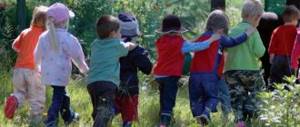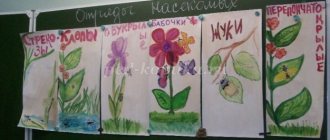Card index of experiments “Snow and Ice”
Target:
Development of creative and cognitive activity of preschool children in the process
research activities.
Tasks:
- Teach children to acquire new information through experimentation.
- To develop children’s ability to observe, draw conclusions and inferences, and then
based on accumulated experience, implement them in independent creative
activities.
- Enrich children's vocabulary.
- Develop cognitive processes (memory, attention, imagination, horizons).
- Develop fine motor skills while implementing creative ideas.
- Develop children’s work and independent skills, sense of teamwork and
responsibility for the work performed.
- Foster activity and a desire to participate in research activities.
- Cultivate an interest in the world around you and a desire to learn something new.
- Cultivate curiosity, love of nature and respect for your health.
Task:
clarify ideas about snow and ice.
Contents of the experience:
Prepare 2 glasses. In one - put snow,
in the other - ice. Find out what color the snow is? Ice?
If children name: white, blue, gray, then show them these colors and compare them with ice.
Result:
The color of snow and ice was determined and compared.
Conclusion:
Snow is white, ice is transparent.
Task:
bring children to the concept of “transparent”.
Contents of the experience:
Prepare a piece of ice and a lump of snow. Place a colored picture under a piece of ice and under a lump of snow. Place a colored picture under a piece of ice and under a lump of snow. Compare where the picture is visible and where it is not. Result:
Under the ice the color picture is visible, but under the snow – not.
Conclusion:
Ice is transparent, and snow is opaque.
Task:
lead children to understand the connection between air temperature and water condition.
Contents of the experience:
Pour clear water into the molds. Add gouache to them. Each mold contains a different gouache. Mix. Take the molds with colored water out into the cold.
Result:
You get beautiful colored pieces of ice (slippery, cold, hard.) Warm the mold in your hands so that the piece of ice pops out more easily.
Conclusion:
Water turns into ice at low temperatures.
Task:
bring children to the understanding that snow melts from any heat source.
Contents of the experience:
Bring snow indoors in a bucket. Watch it melt. Take a little snow on your palm. Also observe the melting process.
Result:
Over time, the snow melts and turns into water.
Conclusion:
From any source of heat, snow melts and turns into water.
Task:
bring children to the understanding that the icicle melts from any heat source (warm room, bright rays of the sun, palm.)
Contents of the experience:
Bring the icicle into a warm room. Place on a tray or palm. Watch her melt.
Result:
Over time, the icicle melts more and more, turning into water.
Conclusion:
The icicle melts from any heat source, gradually turning into water.
Task:
lead children to understand the dependence of the properties of snow on air temperature.
Contents of the experience:
Invite children to make snowballs on a frosty day.
Result:
The snow crumbles easily and sculpting fails.
Conclusion:
In frosty weather, nothing can be molded from snow, because it is light, fluffy, dry, and crumbly.
Task:
clarify the properties of wet snow.
Contents of the experience:
During the thaw, invite children to make snowballs out of snow.
Result:
The snow is molded, beautiful round snowballs are obtained.
Conclusion:
The snow is sticky, heavy, wet, damp.
Task:
determine the properties of snow and ice.
Contents of the experience:
Take a handful of snow and pour it out. What can we call this property of snow? It is advisable to accidentally drop an icicle on a hard surface or knock on it. What happened to her?
Result:
The snow crumbled and the ice cracked.
Conclusion:
The snow is loose and loose. Ice is fragile.
Internet resource used: https://vostochnsad.ucoz.ru/index/0-25
